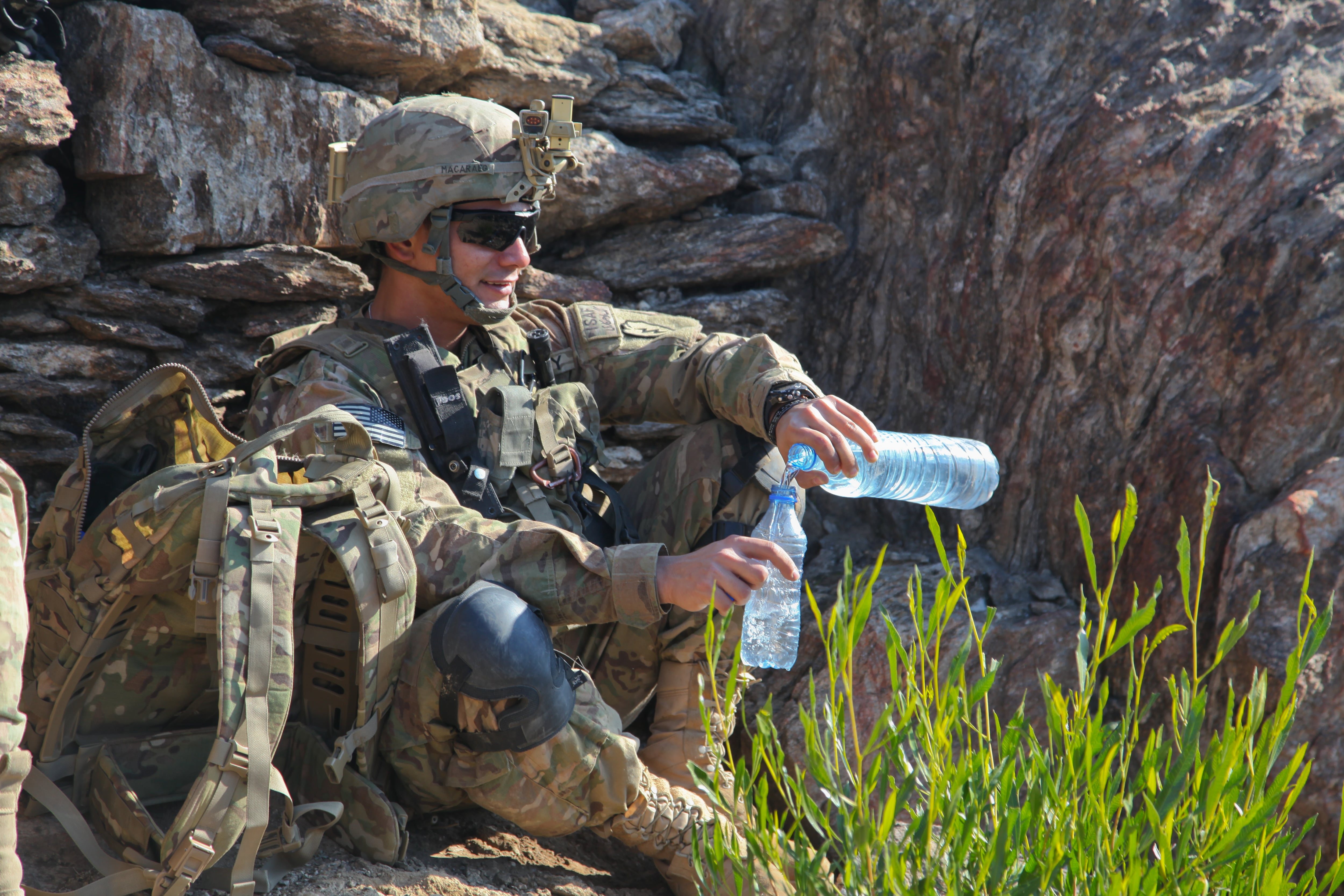The U.S. Army is “precipitously close to mission failure” when it comes to hydrating soldiers in the kinds of contested, arid environments they are likely to go in the next few decades, according to an Army War College study published this summer.
Nearly two decades of missions in the Middle East and Africa depended on bottled water, local wells and reverse osmosis water purification units, but that’s not always going to be available thanks to salt water intrusion into coastal areas and changing weather patterns, according to the study.
“Additionally, warmer weather increases hydration requirements,” the study reads. “This means that in expeditionary warfare, the Army will need to supply itself with more water. This significant logistical burden will be exacerbated on a future battlefield that requires constant movement due to the ubiquity of adversarial sensors and their deep strike capabilities.”
The document paints a dire picture for the Army as it heads into an era of great power competition that aligns with unprecedented changes in the global climate, and which require new technologies and cultural shifts over the next 6-10 years to stem a collapse of the service’s capabilities.
The worry is that the Army, and Defense Department more broadly, will increasingly be called upon to operate in countries devastated by climate change, said Francesco Femia, co-founder of the Center for Climate and Security, which made the document available online.
“Honestly, the biggest lesson flowing from this study, even if it’s not explicit, is that in the next 20 years, it’s probably best to avoid some of these pretty catastrophic risks by just slowing the rate and scope of climate change,” Femia, whose own research is cited in the study, told Army Times. "It’s going to be pretty important to avoid even a 1.5 degree increase in global temperatures.”
The Army’s brigade combat teams depend heavily on bottled water, which in turn relies on a costly logistics train. At one forward operating base in Iraq during the 2000s, more than 864,000 bottles of water were consumed each month, with that number doubling during hotter months, according to the study.
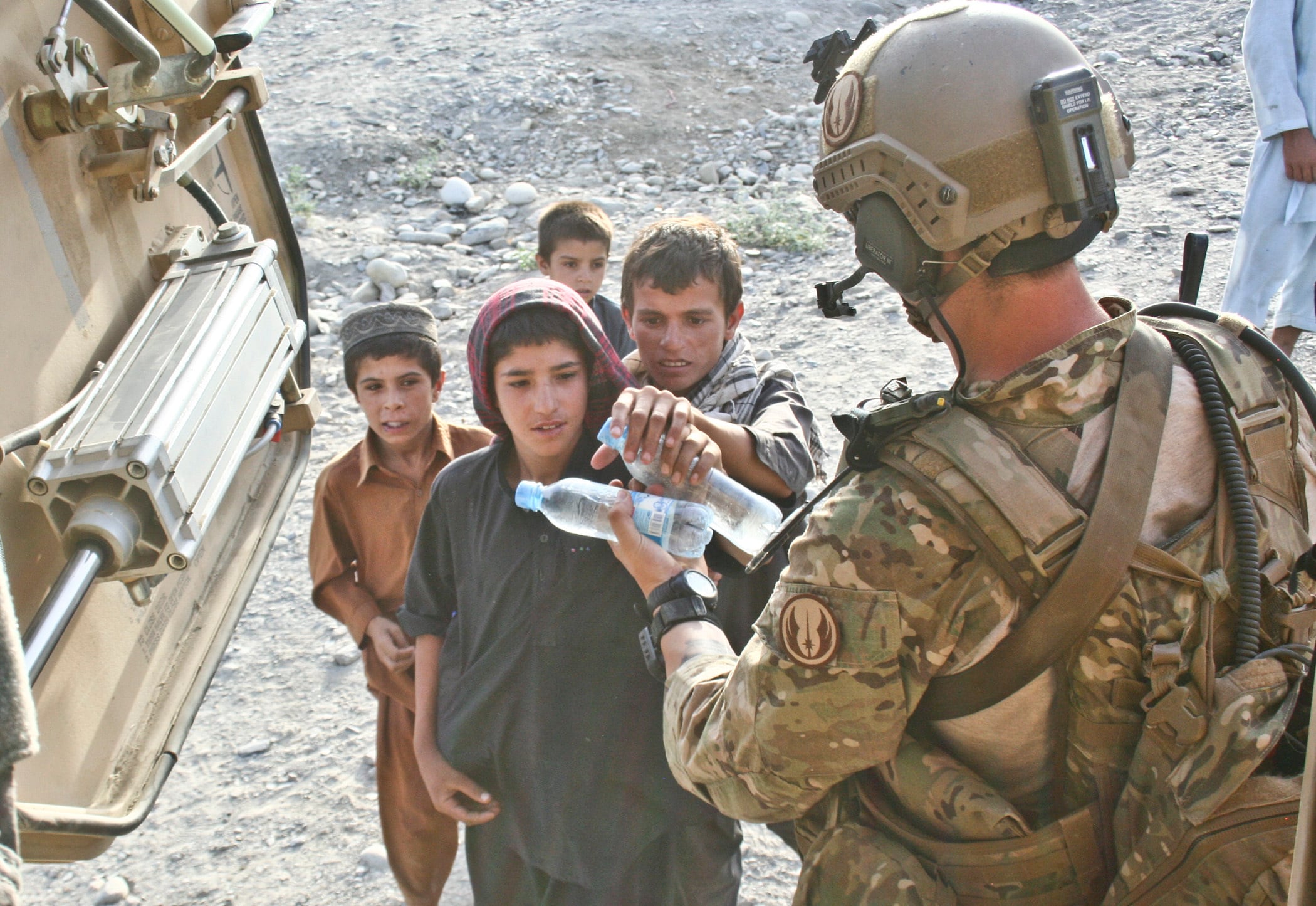
“Very few Army units have water generation capabilities, and as of 2015, brigade combat teams can no longer organically support their water needs,” the study reads. “The additional units needed to support them creates an unsupportable logistical footprint and reduces the speed of the combat units.”
Changing Army force structure or logistical chains alone won’t solve the issue, according to the study. And local wells can’t be relied upon for safe and secure procurement.
Instead, soldiers will need the ability to collect water from the atmosphere through technology like water harvesters, which condense water vapor in the air, and which were tested by University of California, Berkeley researchers two years ago.
Increase in proxy wars
Beyond the worry that the current means of hydrating soldiers in war is untenable, the study also stresses that "the Department of Defense is precariously underprepared for the national security implications of climate change-induced global security challenges.”
“Rising seas will displace tens (if not hundreds) of millions of people, creating massive, enduring instability,” the study warns. “This migration will be most pronounced in those regions where climate vulnerability is exacerbated by weak institutions and governance and underdeveloped civil society.”
The coming decades will bring droughts, changes in water and food security, more frequent extreme weather events, mass migration and an increase in the range of insects that are vectors of infectious tropical diseases, the study warns.
“We have growing evidence [that] climate change increases the likelihood of conflict, particularly in ethnically factionalized societies that have had a history of either violence or tensions along ethnic or sectarian lines," Femia said.
As precipitation declines in parts of the Middle East and North Africa during the winter months, some areas could become completely uninhabitable, he added.
Political instability in these places will be ripe for exploitation by America’s peer adversaries, namely Russia and China.
“The risks related to climate change are often thought of as sort of a separate risk matrix from the great power competition, but climate change is certainly playing a role in that," Femia said.
RELATED
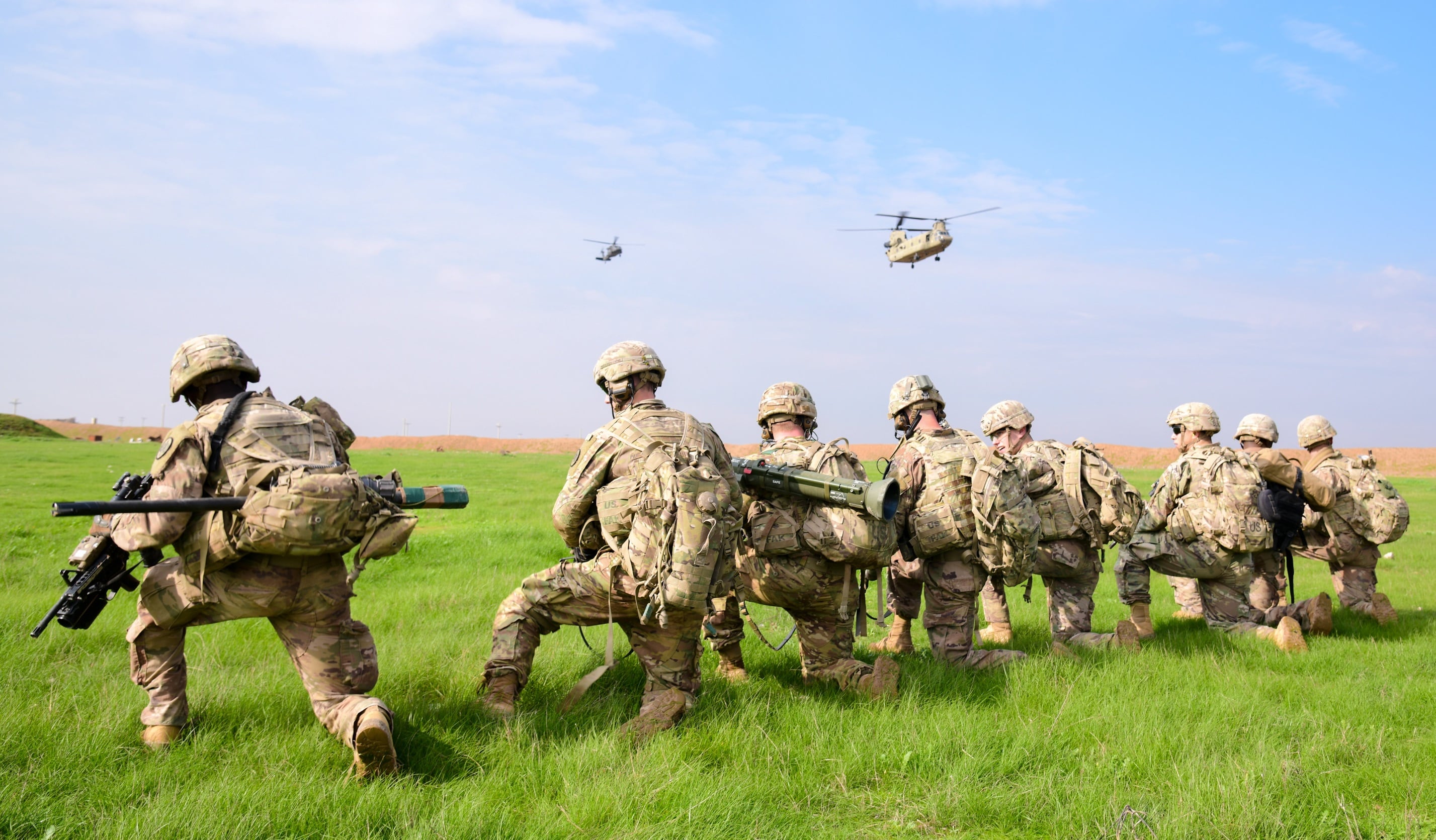
It remains a matter of debate whether climate change contributed to the Syrian civil war.
“There is, however, no question that the conflict erupted coincident with a major drought in the region which forced rural people into Syrian cities as large numbers of Iraqi refugees arrived,” the study reads.
Syria had a population of about 22 million people before the war, nearly 5 million of whom fled the country after it began. The civil war also destabilized neighboring countries.
In Iraq, already stressed sectarian tensions were once again inflamed, and a host of nations, including Turkey, the United States, Russia, Iran and many Gulf States sponsored factions in the Syrian conflict, hoping to gain a geopolitical edge once the dust settled.
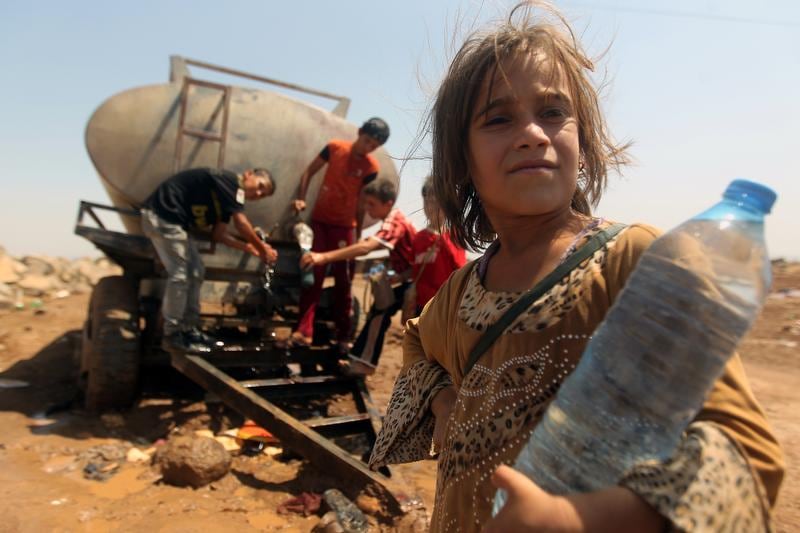
“The Syrian civil war has reignited civil war in Iraq, and brought the U.S. and Russian militaries into close contact under difficult circumstances," the study reads. “The Syrian population has declined by about ten percent since the start of the war, with millions of refugees fleeing the nation, increasing instability in Europe, and stoking violent extremism.”
As a potential flashpoint for future conflict, the study looked at the case of Bangladesh, which has eight times the population of Syria and a population that lives largely at sea level in areas prone to seasonal flooding.
“As seas rise and huge areas of Bangladesh become uninhabitable, where will tens of millions of displaced Bangladeshis go?” the study poses as a question.
As with most things related to climate change, the ripple effects are important. Bangladeshi refugees will be poised to burden nearby Pakistan and India, two nuclear-armed countries with a history of waging war and skirmishing.
Competition for the Arctic
Climate change is also opening up new trade routes and opportunities to exploit resources in the Arctic.
Those routes have the potential to turn the Arctic into a geostrategic region on par with the Straits of Malacca — a major shipping channel between the Indian and Pacific oceans — and the Suez Canal, according to a strategic outlook published by the Coast Guard in April.
For example, the Northern Sea Route offers a 35-day mean transit time from Shanghai, China, to Rotterdam, Netherlands, cutting two weeks off the Suez and Malacca transit route, according to the Coast Guard document.
“China certainly sees itself as an Arctic nation, even though it’s not an Arctic nation, and is investing in the region," Femia said. “Russia is trying to expand its territorial claims in the Arctic and is much more ready than the U.S. is to operate in the region with its icebreaker fleet.”
RELATED
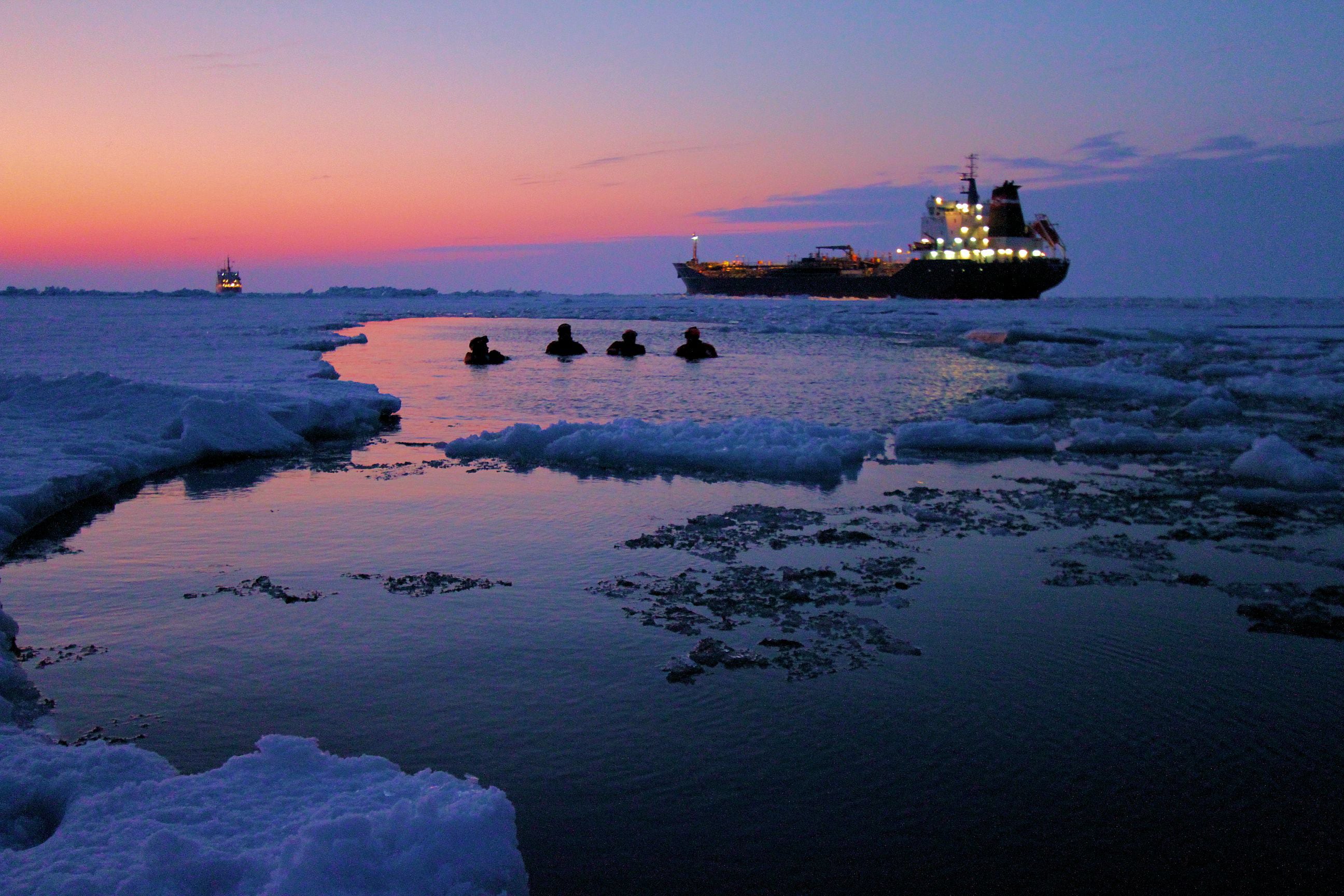
The Army War College study notes Russia’s rapid build-up in the Arctic as concerning, which includes the opening of 16 deep water ports, 13 airfields and 10 air defense sites. And Russia’s development of KH-101/102 air-launched cruise missiles and SSC-8 ground-launched cruise missiles potentially put much of the U.S. mainland at risk from low altitude, radar evading, nuclear capable missiles, according to the study.
The Army should “immediately” expand the Arctic training available to units, and start to focus on developing a doctrine to operate in the region, the study said.
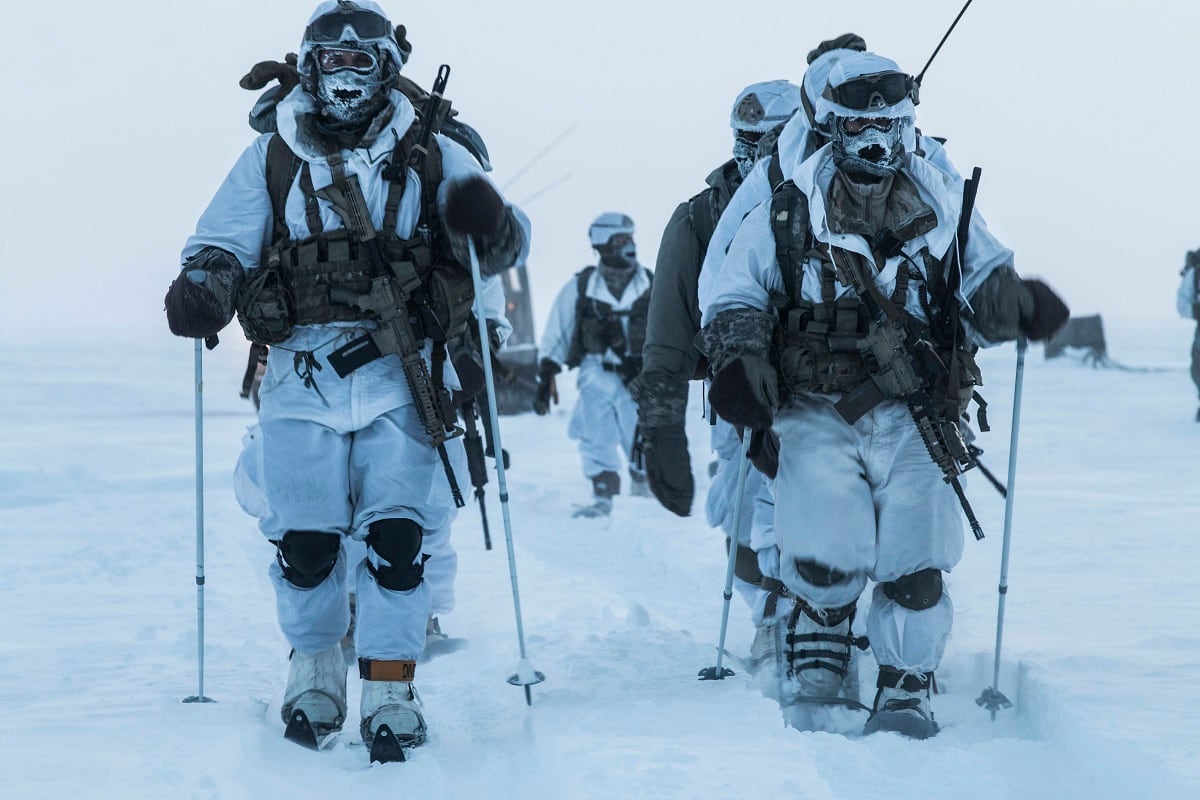
Over the next 5-10 years, the Army should focus on materiel solutions to operating in environmental extremes, expand its GPS satellite distribution over the Arctic, expand GPS alternatives in the region and develop vehicles and equipment that can operate on Arctic terrain.
Whether it’s in the Arctic, North Africa or the Middle East, the Army needs to change how it operates, the study showed. As it stands, the service is designed to win wars with little regard for the environments it operates in.
“Turbine engines that power helicopters and tanks burn thousands of pounds of JP-8 fuel per hour. Every time one of those turbine engines is shut off almost a pint of jet fuel is dumped overboard onto the ground,” the document reads.
“The munitions used in training rain lead and explosive residue into range complexes across the country. Armored vehicles churn up the soil in maneuver areas and contribute to erosion and sediment runoff into streams," the study reads. "In myriad offices across the force, thousands of pages of PowerPoint presentations are printed off every day, simply to be thrown away after the briefing. In short, the Army is an environmental disaster.”
That doesn’t help the Army’s image at home, or abroad, where its forces depend on allies and their ports, airfields, ranges, roads and other infrastructure.
The study cites the U.S. withdrawal from the Paris climate accords as having “elicited strong reactions in the developed world.”
“By contrast, although China is the largest carbon emitting nation, it has been more thoughtful about how it projects its image globally with respect to carbon emissions, and Chinese clean energy initiatives have been widely publicized in the U.S.”
As climate change and environmental stewardship become premier issues in international security, the Pentagon at large could risk isolating its military operations if its wasteful habits alienate allies and partners.
“The U.S. military depends on access to the bases and ports of allies, it enjoys flyover privileges, and other preferential treatment,” the study reads. “All of this exists because allies see the U.S. as aligned with their core interests. In the core powers of Europe, in the Commonwealth countries, in Japan, and elsewhere, social mobilization due to perceived climate change has the potential to create a fundamental misalignment between the U.S. and its key allies.”
Kyle Rempfer was an editor and reporter who has covered combat operations, criminal cases, foreign military assistance and training accidents. Before entering journalism, Kyle served in U.S. Air Force Special Tactics and deployed in 2014 to Paktika Province, Afghanistan, and Baghdad, Iraq.
